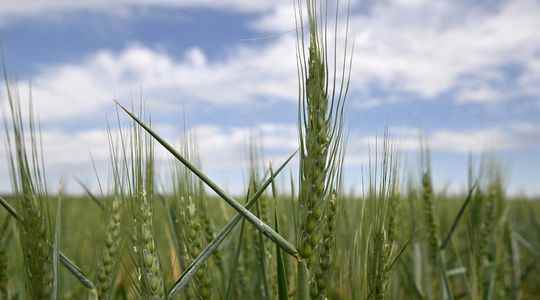“Half of the increases requested” by manufacturers in the context of renegotiations on the price of foodstuffs which will then be sold by supermarkets “are not transparent and are suspect”. This is what was estimated this Thursday, June 30 on BFMTV and RMC the president of the strategic committee of the centers E. Leclerc, Michel-Edouard Leclerc. He also judged that “many of the increases requested are increases in anticipation, even speculation”.
He asked MPs “to open a commission of inquiry into the origins of inflation, into what is happening on the price front from transport to consumers”. Faced with soaring production costs linked to the recovery of the post-Covid-19 economy as well as the war in Ukraine, the government called on distributors and agri-food manufacturers in mid-March to get back around the table to review the contracts just signed on March 1 following commercial negotiations.
These contracts fix the price of some of the products that will be sold during the year in supermarkets and the first round of negotiations led to an average increase of 3% in the prices charged by manufacturers to distributors.
Inflation that started (long) before the war in Ukraine
The rise in the price of raw materials for the food industry, such as that of wheat, which has gained $150 a ton since January 2022, to exceed $420 in mid-May, is not only linked to the war in Ukraine. . The producer prices of agricultural products were already showing a very strong increase in 2021, as demonstrated by the 2022 report of the Observatory of the formation of prices and margins of food products, unveiled this Thursday, June 29. “The increase – almost general – in agricultural prices is indeed a reality in France in 2021/22 and the data presented in the Observatory report up to December 2021 already show it in all its pre-war magnitude in Ukraine” , notes the document.
In 2021, all prices for means of production increased by 9.0% compared to 2020. Similarly, agricultural producer prices had already increased markedly (+9.2%). “The year 2021 was already marked by very strong tensions on the agricultural markets”, summarizes Philippe Chalmin, president of the Observatory, with the new factory.
Prices vary by product. As far as the animal sectors are concerned, most of them saw their production prices increase (+7.4% for the bovine sector, +5.9% for poultry, or even +4.2% for the cow’s milk), with the exception of the pig sector (- 4.3%). This increase is even more considerable for the vegetable sectors, reaching + 27.3% for the prices of durum wheat, + 25.0% for common wheat and + 16.0% for fresh fruits.
For common wheat, “this situation is explained by the tensions on prices in 2021, in a context of the continuation of the global pandemic linked to Covid-19 and its successive waves in the world. Indeed, the annual average of FOB Rouen price increases by 24% between 2020 and 2021, after an increase of 7% between 2019 and 2020”, notes the document of the Observatory of the formation of prices and margins of food products.
According to this report, on average, the prices of food industry products increased in 2021: + 2.2% between 2020 and 2021, according to the INSEE food industry production price index. The rise in ex-industry prices concerns pasta (+ 6.3%), beef (+ 3.0%), poultry (+ 1.7%), cow’s milk products (+ 1.3% on all products as a whole, but up sharply by 18.8% on butter-powder products intended for the food industries), as well as aquatic products (+ 1.5% for fresh and frozen fish and + 0 7% for the preparations and preserves of seafood products).
Drought in Canada, increase in grain purchases from China…
Several events have disrupted the markets in 2021. The climate, first, such as the drought in western Canada which affected rapeseed and durum wheat production in particular, or climate concerns in South America with La Niña , notes the report.
Another key factor was the considerable increase in grain purchases by China, which tripled to more than 60 million tonnes. As the Observatory reminds us, the prices of cereals and oilseeds have experienced sharp increases on the international and therefore also European markets: + 97% for soybean oil, + 46% for soybeans and for rapeseed, + 65% for corn according to average 2021 prices compared to 2020 in US dollars. Chinese demand and production problems in New Zealand have also pushed dairy products higher.
The outlook for the year 2022 is not encouraging, notes the document, even though it promised to be “favorable and we could hope for an easing of world prices” before the war in Ukraine, which “upset the situation “. “It is now confirmed that Ukrainian agricultural production will be greatly reduced and the country’s export capacities will be very limited. This will affect wheat (but Russian wheat may come out of black Sea) but above all maize and sunflower.” As a result, the report points out, we can “now speak of a real agricultural crisis”.
